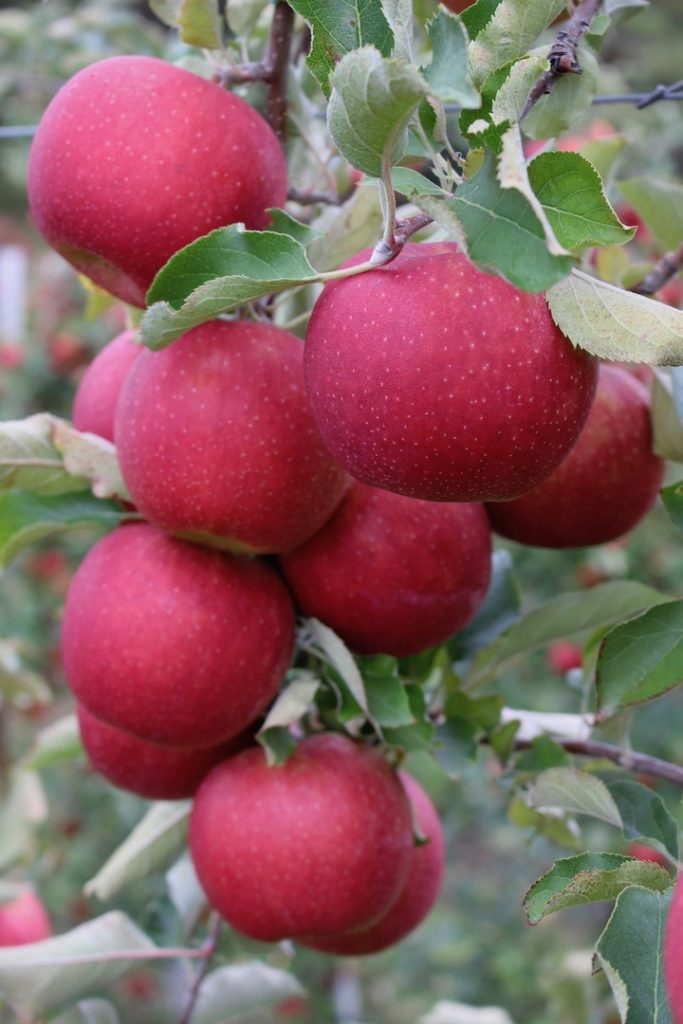
WITH OCTOBER comes a rush of late-season apples, from the New England heirlooms Baldwin and Northern Spy, to a trio of large, yellow apples—Golden Delicious, Mutsu, and Shizuka—to many of the russeted varieties known for their great flavor and storage capabilities (Ashmead’s Kernel, Golden Russet, and Roxbury Russet, to name a few).
It’s a great crescendo to what has been an outstanding fall harvest, and the crisp October air is ideal for visiting the orchard. Start your trip with a cider donut and a glass of fresh-pressed apple cider, and then sample some of the best fruit of the season.
One of these later varieties is Jonagold, a large, beautiful apple with flavor and crispness to match. Jonagold has a conical shape reminiscent of its Golden Delicious parent, and its splashes of gold color stand out on a mostly red skin, a trait of its other parent, the heirloom Jonathan (some strains have been developed for redness).
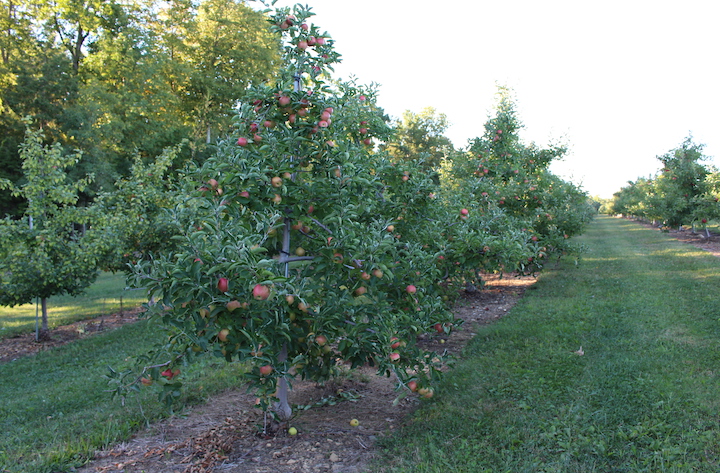
Jonathan was discovered in New York state in the early 1800s, and it migrated to the Midwest, where it is still popular for its rich color and spicy flavor, some of which it has imparted to Jonagold. Its fans are particularly devoted; we recently had a call from a woman in Texas trying to track down some Jonathans.
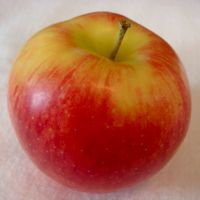
Jonagold has a distinctive, explosive crunch and juiciness similar to Honeycrisp, and more apple flavor, with a little tang to go with its sweetness. Discovered in 1943 at the New York Agricultural Experiment Station in Geneva, New York, it was released commercially in 1968.
Given its many admirable traits, it is a bit curious that Jonagold lacks the name recognition and marketing power of Honeycrisp. It is that good. It may be that in an age of apples called Jazz and Evercrisp and Pixie Crunch, Jonagold’s nondescript name does not match up well in today’s marketplace.
But don’t be fooled by its bland name. Ask for New England-grown Jonagolds in your grocery store, or better yet, pick one off the tree or buy a bag at your favorite orchard or farm stand. It’s an apple not to be missed.
2020 CALENDARS ARE IN!
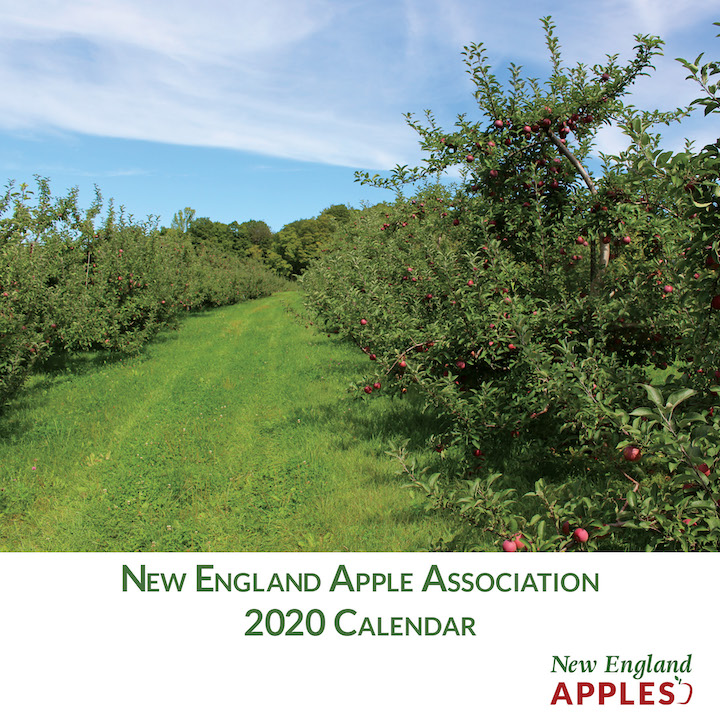
THE 2020 NEW ENGLAND APPLES wall calendar is now available.
Each month features a photograph of a New England orchard by Bar Lois Weeks and Russell Steven Powell, a photo and description of a New England apple, and a health tip about eating apples.
The back page has a list of New England orchards with web addresses and contact information.
To order your calendar, send $10 to New England Apple Association, PO Box 41, Hatfield, MA 01038. Price includes shipping.
APPLE TALKS

FOR READERS in western Massachusetts, Russell Steven Powell, executive director of the New England Apple Association and author of the books America’s Apple and Apples of New England, will be giving several talks this fall about the history of apple growing in New England:
WEDNESDAY, OCTOBER 16, 6 p.m.
“A History of Apples in New England”
39 Main Street, Hatfield, Massachusetts
* * *
SATURDAY, NOVEMBER 2, 1 p.m.
115 Main Street, Northfield, Massachusetts
“Apples of New England”
Part of Franklin County CiderDays
* * *
WEDNESDAY, NOVEMBER 20, 1 p.m.
Look Park
300 North Main Street, Florence, Massachusetts
“Apple Growing in New England”
* * *
EVERYTHING YOU WANT TO KNOW ABOUT APPLES
FOR ANYONE unable to attend the talks but desiring more information about apples, America’s Apple and Apples of New England are excellent resources.
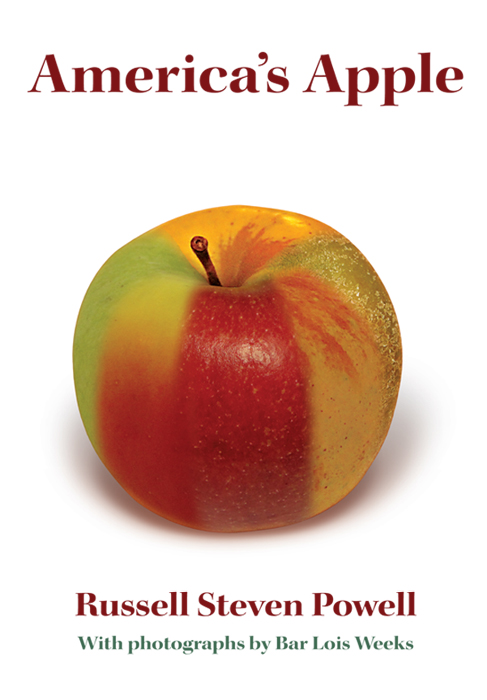
America’s Apple is a contemporary account of how apples are grown, sold, and used across the United States, with separate chapters on horticulture, heirlooms, food safety, dealing with orchard pests, and how new apples are developed. There are also chapters with recipes and apple drinks.
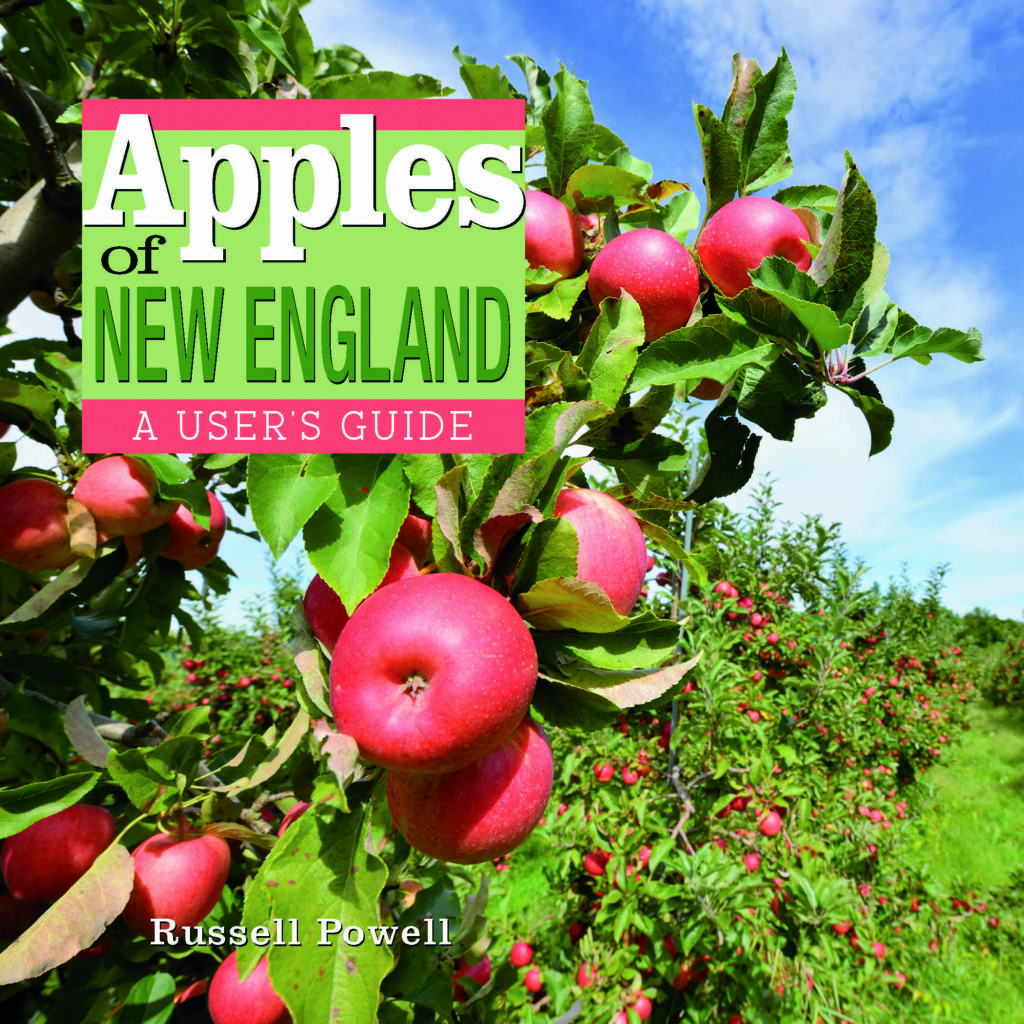
Apples of New England is a regional history and guide, with photographs and descriptions of more than 100 apples discovered, grown, or sold in New England, including many rare varieties.
* * *
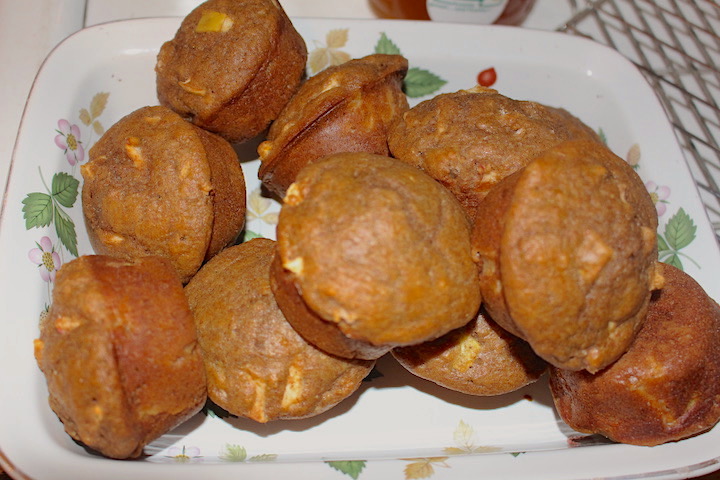
New England Apple Muffins
Try some late-season New England apples, like Baldwin or Winesap, for good nutrition and great flavor. Use your own favorite substitutions to make these fluffy muffins even more nutritious.

1/8 c fresh New England apple cider
1 unpeeled late-season New England apple, like Mutsu or Golden Delicious, cored and quartered (use 1/4 c for recipe)
1/4 c butter, softened
1/2 c honey
1 t almond extract
1 unpeeled New England apple, like Northern Spy or Jonagold, cored and finely chopped
1/2 c Greek yogurt or milk
2 eggs, whisked
* * *
2 c whole wheat flour
1/2 t baking soda
1-1/2 t baking powder
1/2 t salt
2 t cinnamon
pinch of nutmeg
Preheat oven to 350° F. Grease tins for 12 muffins.
In small saucepan, place the cider and quartered late-season apple. Bring to a boil and cover. Simmer to a sauce 15-20 minutes. Mash and measure 1/4 cup sauce for recipe. Enjoy the remainder for a later treat!
In medium bowl, melt butter into 1/4 cup warm applesauce. Stir in honey, extract, and the finely chopped apple. Mix in yogurt and eggs.
In a large mixing bowl, whisk dry ingredients together. Add applesauce mixture, taking care to only stir until batter is moist but still lumpy.
Spoon into prepared muffin tins. Bake 25 minutes until lightly browned. Use the toothpick test to check they are done.
2 Comments
Robert Floyd
WOW!!! So much to read…and savor. Thank you.
Russell Powell
Thank you, Robert! ‘Tis the season.